English gardens are renowned for their timeless appeal and charm. They are defined by blending both formal and informal elements. English gardens started with the idea of a more natural order to the landscape vs the very structured and formal French gardens. English gardens sometimes borrow elements of the French garden, but they are generally more natural, loose and “flowy”. Incorporating any of these 5 components of English gardens into your landscape can transform your outdoor space into a picturesque retreat.
1. Create a Naturalistic Layout
One of the hallmarks of an English garden is its naturalistic layout. Unlike the more linear and formal French gardens, English gardens embrace organic shapes. Incorporate winding pathways that meander through your garden, guiding visitors to different focal points. Use materials like gravel, stone, or pavers to create paths. Install sweeping beds filled with a mix of perennials, shrubs, and trees. Aim for a layered planting approach where you place taller plants at the back and shorter ones in the front. This creates depth to the landscape.
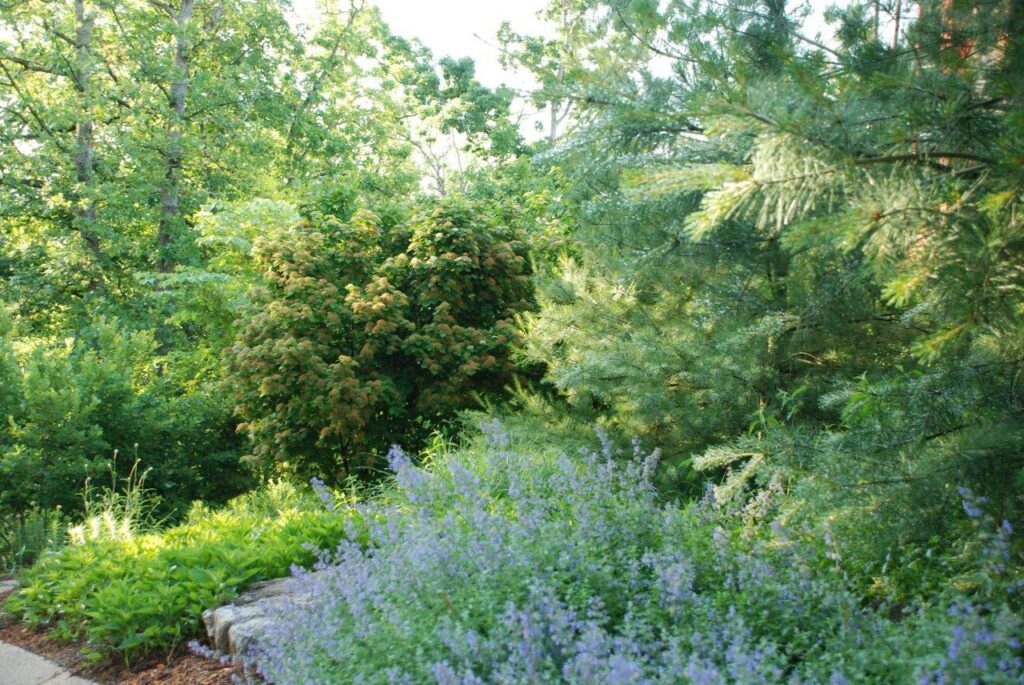
2. Embrace the Cottage Garden Style
The term “cottage garden” is sometime used synonymously with English garden design. This style emphasizes a more relaxed, informal planting scheme with a large variety of plantings. To help achieve this look, you would lean towards more densely planted beds filled with a variety of colorful blooms and foliage types. Some good options for Missouri are peonies, roses, ninebark, and hydrangeas. The key to this look is to let plants spill over edges and intermingle with each other creating a lush feel. Mixing in herbaceous perennials such as coneflower, salvia, and catmint is a great way to add pops of color.
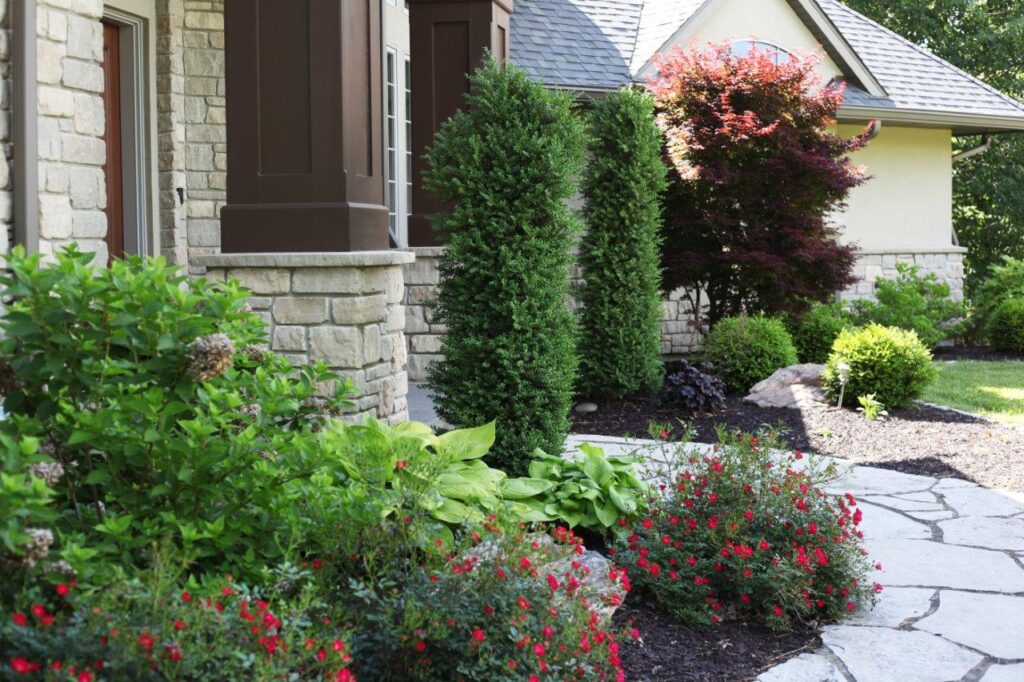
3. Use Hedges and Borders for Structure
While English gardens are known for their naturalistic planting, they also feature structured elements. Hedges are commonly used to create boundaries and add privacy. Consider planting evergreen hedges like boxwood or yew to create separate “rooms” within your landscape. You can also use upright evergreens to highlight the architecture of your house or add focal points. In addition to hedges, use plant borders to define pathways and garden beds. Mixed borders, which combine perennials, shrubs, and annuals, are a staple of English gardens. These borders should be densely planted also.
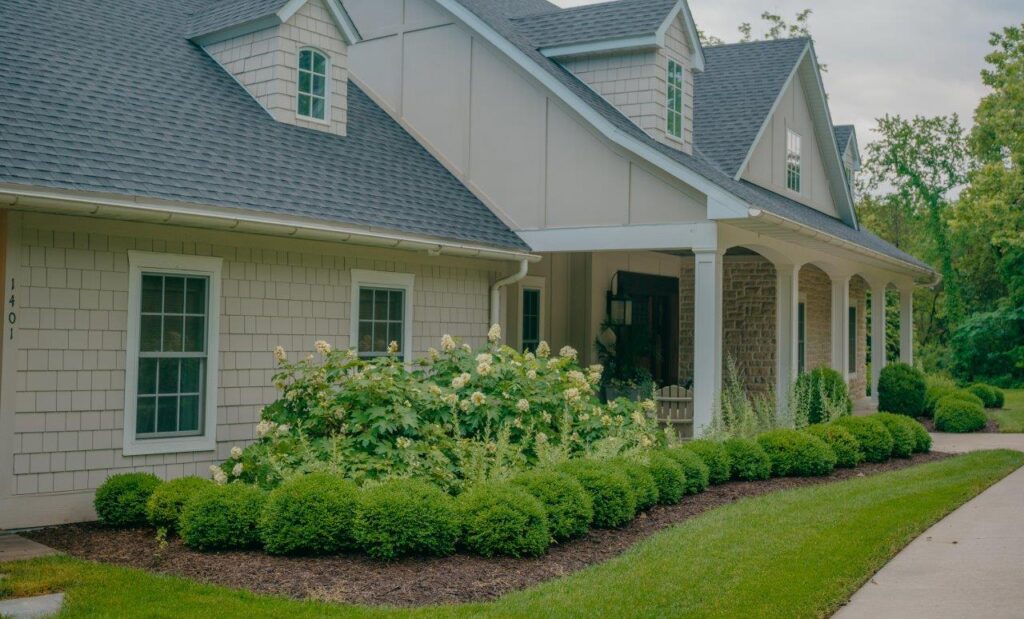
4. Incorporate Water Features
Water features are another key element of English gardens. If your landscape allows, consider incorporating a small pond, fountain, or even a stream. These features not only provide visual appeal but also add great sounds to the garden and can enhance any outdoor space.
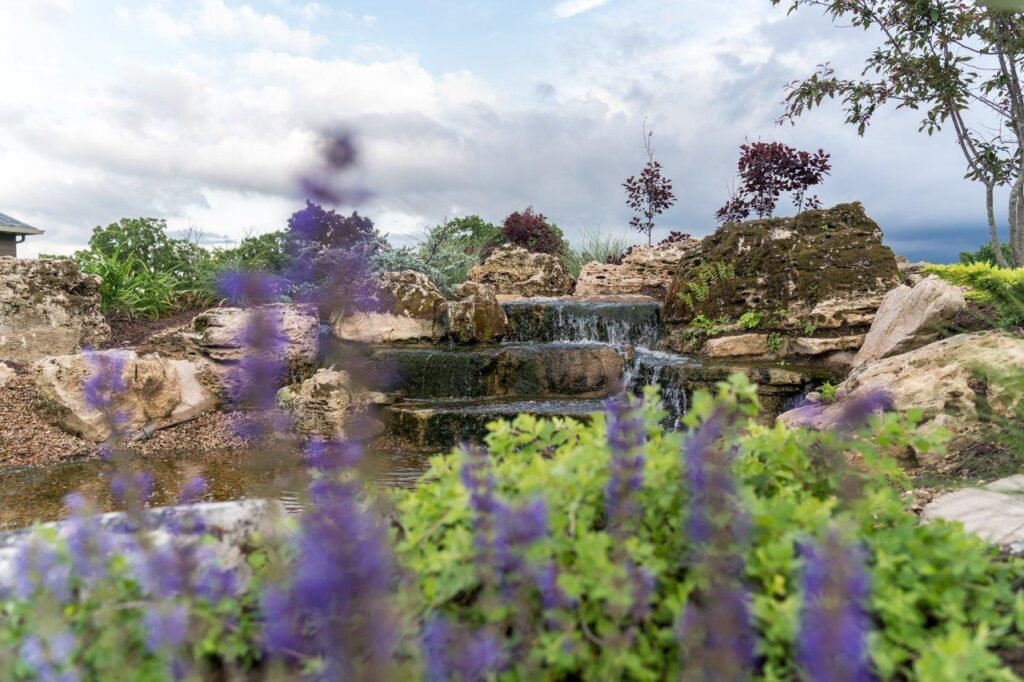
5. Add Garden Structures
Finally, consider incorporating garden structures like pergolas, arbors, or trellises. These elements add height and vertical interest to your landscape. A pergola is a great way to provide shade for a seating area, while an arbor can frame an entryway or pathway. Climbing plants like roses or wisteria can be trained to grow over these structures which also add to the English garden aesthetic.
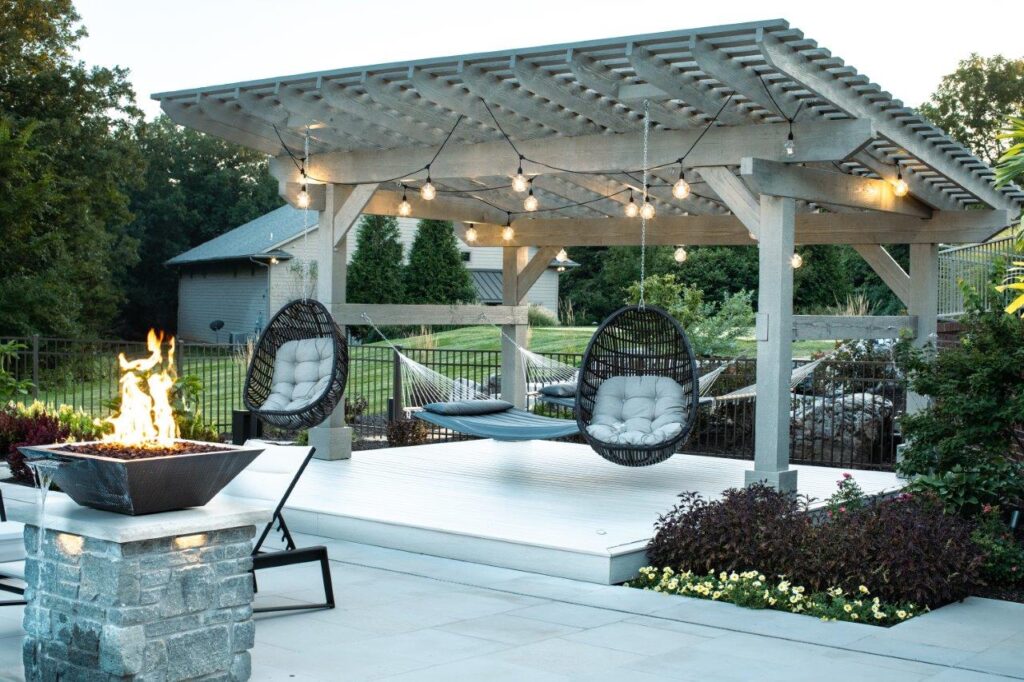
Conclusion
Creating the English garden look is all about balancing structure with natural beauty. By blending formal elements like hedges and upright evergreens with flowy pathways and informal mass plantings, you can create a garden that feels both structured and naturalistic. Talking to the staff at Superior Garden Center or hiring a qualified designer is a great way to get guidance on your plant selections and overall design.

